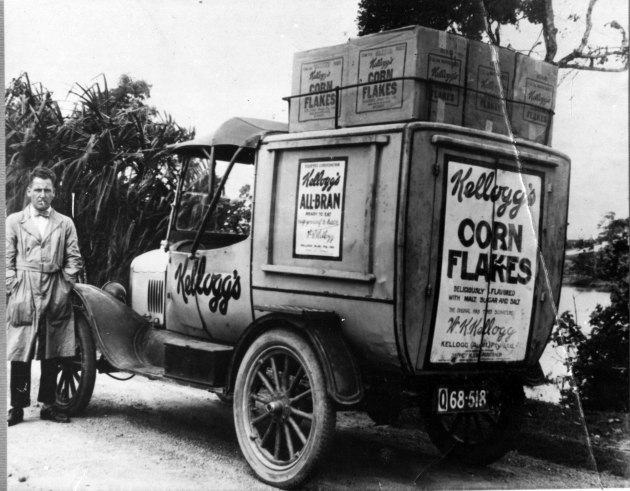In 1924, machinery specialist Morris Raymer was tasked with travelling to Australia to set up a Kellogg’s Corn Flakes machine in a rented building in Sydney’s Chippendale, producing 50,000 cases each week. The installation heralded the beginning of Kellogg’s 100 years of manufacturing in Australia.

Four years later, to keep up with demand for Corn Flakes, a new factory was set up in Botany. The factory remains on the same site today, producing 42 million kilograms of cereal every year and continues to source the majority of its raw ingredients from local Australian farmers.
Kellanova ANZ MD Anthony Holme said that for 100 years, the grains used to make Kellogg’s cereals had been sourced from generations of Aussie farming families, and today over 87 per cent of the ingredients used to make the cereal in Botany are sourced locally, including corn, wheat, rice, oats, sugar and salt.
“When you enjoy your bowl of Kellogg’s cereal in the morning, there have been one hundred years of Aussies doing the same. I have thoroughly enjoyed looking back on our rich history of being there at every table, for millions of Aussies,” said Holme.
Holme added that having sourced Australian-grown ingredients over the past 100 years, the company is focused on environmental initiatives to help farmers stay resilient for the next hundred years.
“In 2020 we increased our support by partnering with the Cool Soil Initiative, working together to reduce farm greenhouse gas emissions and future-proof crops against climate change,” said Holme.
Last year, Corson Grain, Kellogg’s exclusive corn partner, joined the Cool Soil Initiative, putting Corn Flakes on a journey to become more sustainable, and reducing emissions using Kellogg’s ‘soil to spoon’ supply chain.

Over the decades, Kellogg’s has made Nutri-Grain, Just Right and Sustain uniquely for Australian tastes. To this day, Nutri-Grain cereal is only made in the Botany facility in Australia.
Kellogg’s through the decades:
- Cornelius, the Corn Flakes rooster, first appeared on boxes in 1960;
- “Just like a chocolate milkshake . . . only crunchy!” first aired on national television in 1962 for Coco Pops;
- 1980 saw the launch of the Nutri-Grain IronMan and IronWoman series. This partnership continues 43 years on, maintaining a lasting connection within the surf sporting community;
- in 2006 Kellogg introduced the first front-pack Percentage Daily Intake Counters, for more informed food choices.
- Pringles joined the Kellogg Company in 2012;
- as part of its Better Days initiative, Kellogg’s has donated more than 60 million serves of cereal and snacks over the past 10 years.







